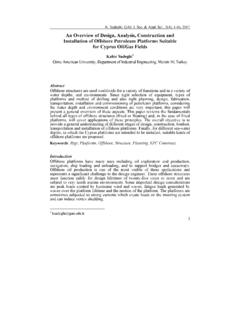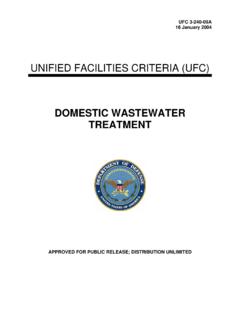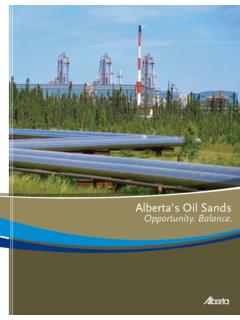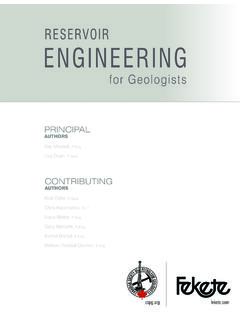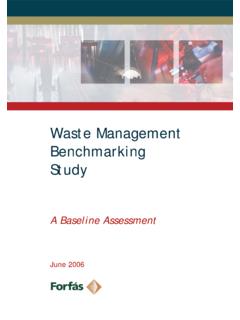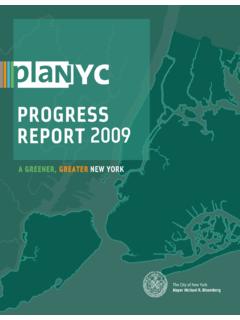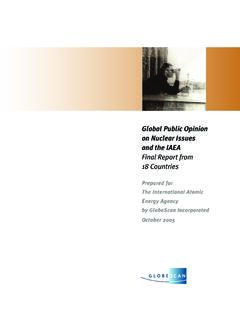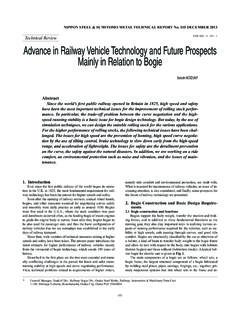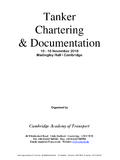Transcription of Methane Digesters For Fuel Gas and Fertilizer
1 1 Methane Digesters For fuel Gas and Fertilizer With Complete Instructions For Two Working Models by L. John Fry Santa Barbara, California " Methane Digesters " is also published, independently, as Newsletter No. 3, Spring 1973, by The New Alchemy Institute, Box 432, Woods Hole, Massachusetts 02543, price $ Eighth Printing 1973 L. John Fry Richard Merrill Inspiration: L. John Fry Contributors: L. John Fry, Richard Merrill Editors: Richard Merrill, Yedida Merrill Artwork: Beth Amine Thanks to: Earl Barnhart Kim Mitchell 2 Methane Digesters For fuel Gas and Fertilizer With Complete Instructions For Two Working Models by L. John Fry 1. Background Mr. L. John Fry beside a three-digester unit he made in 1973. Gas holder center, water-heater on the right. Buckets in the foreground were for loading raw materials.
2 This unit was taken down in 1974. Figures (On my S. African farm): Capital cost = $10,000 Gas per day = 8,000 ft3 Value, as gas = $ or $16,578 over six years Value, as electricity = $ or $16,271 over six years PLUS savings down from 8 man/days per week to 1 man/day PLUS 5 tons Nitrogen, 4 1/2 tons Phosphates and 1 ton Potash per year in liquid end products. 3 When organic material decays it yields useful by-products. The kind of by-product depends on the conditions under which decay takes place. Decay can be aerobic (with oxygen) or anaerobic (without oxygen). Any kind of organic matter can be broken down either way, but the end products will be quite different (Fig. 1). It is possible to mimic and hasten the natural anaerobic process by putting organic wastes (manure and vegetable matter) into insulated, air-tight containers called Digesters .
3 Digesters are of two types: 1. Batch-load Digesters which are filled all at once, sealed, and emptied when the raw material has stopped producing gas; and 2. Continuous-load Digesters which are fed a little, regularly, so that gas and Fertilizer are produced continuously. The digester is fed with a mixture of water and wastes, called "slurry." Inside the digester, each daily load of fresh slurry flows in one end and displaces the previous day's load which bacteria and other microbes have already started to digest. Each load progresses down the length of the digester to a point where the Methane bacteria are active. At this point large bubbles force their way to the surface where the gas accumulates. The gas is very similar to natural gas and can be burned directly for heat and light, stored for future use, or compressed to power heat engines.
4 Digestion gradually slows down toward the outlet end of the digester and the residue begins to stratify into distinct layers (Fig. 2) 4 Sand and Inorganic Materials at the bottom. Sludge, the spent solids of the original manure reduced to about 40% of the volume it occupied in the raw state. Liquid or dry sludge makes an excellent Fertilizer for crops and pond cultures. Supernatant, the spent liquids of the original slurry. Note that the fertilizing value of the liquid is as great as sludge, since the dissolved solids remain. Scum, a mixture of coarse fibrous material, released from the raw manure, gas, and liquid. The accumulation and removal of scum is one of the most serious problems with Digesters . In moderate amounts, scum can act as an insulation. But in large amounts it can virtually shut down a digester.
5 For perspective, consider the total fuel value of Methane that could be produced from the available organic wastes in the United States. Table 1. Total fuel Value of Methane Resources Supplied by Digestion of Readily Collectable, Dry, Ash-Free Organic Wastes. I. fuel Value of Methane Resources (From Ref. 1) A. Organic wastes in 2 billion tons (wet weight) 800 million tons (dry weight) B. Dry organic waste readily collectable million tons C. Methane available from "B" trillion ft3/year (@10,000 ft3/ton)* D. fuel value of Methane from "C" 1,360 trillion BTU/yr (1000 BTU/ft3) II. fuel Consumption of Farm Equipment (From Ref. 2) A. Total gasoline consumed (1965) 7 billion gallons/year B. Total energy consumed by "A" 945 trillion BTU/year (1 gallon gasoline = 135,000 BTU) III. Total Natural Gas Consumption (1970) 19,000 trillion BTU IV.
6 Total Energy Consumption (1970) 64,000 trillion BTU *Urban refuse; higher figure for manure and agricultural wastes. So, speaking generally, Methane gas converted from easily available organic wastes could supply about 150% of the gasoline energy used by all farm equipment (1965), 7% of the 1970 natural gas energy, and 2% of the total 1970 energy demands. Methane -Gas Plant: Synergy at Work When we consider Digesters on a homestead scale, there are two general questions to ask: (1) with the organic wastes and resources at hand, what kind of digester should be built, and how big should it be? And (2) what is the best way of using the gas and sludge produced to satisfy the energy needs of the people involved (whether the sludge should be used to fertilize crops, fish or algae ponds, and whether the gas should be used directly for heat, and light, or stored, or fed back to the digester to heat it, etc.)
7 Fig. 3)? 5 Fig. 3 Related considerations of a digester operation The first question involves the digester itself, which is just the heart of a whole energy system. The second question is synergistic; you can choose which products are to be generated by digestion and how to use them or feed them back to the digester, creating an almost endless cycle if you wished (Fig. 4). Fig. 4 The closed nutrient system of a complete digester operation The model in Fig. 4 is idealized from oriental aquaculture systems and other ideas, both old and new. A single pathway can be developed exclusively (have your digester produce only sludge to feed an algae pond) or you can develop the potential synergy (many possible systems working together as an integrated whole, Fig. 5). 6 Fig. 5 Integrated organic digester operation (using 50 gallon drums for digester) The small farmer or rural homesteader can take a step toward ecological self-sufficiency by producing some of his fuel and Fertilizer needs using a digester to convert local wastes.
8 Total dependence on conventional fuels, especially in rural areas, is likely to become a serious handicap in the years to come as reserve shortages and specialized technologies hike the costs of fossil and nuclear fuels. But by producing energy from local resources, it is possible to be partially freed from remote sources of increasingly expensive fuel supplies. 72. History In nature, anaerobic decay is probably one of the earth's oldest processes for decomposing wastes. Organic material covered by a pool of warm water will first turn acid and smell rank, then slowly over about six months will turn alkali. The Methane bacteria, always present, will take over and decompose it, and gas bubbles will rise to the surface. Anaerobic decay is one of the few natural processes that hasn't been fully exploited until recent times.
9 Pasteur once discussed the possibilities of Methane production from farmyard manure. And (according to a report issued from China, April 26, 1960) the Chinese have used "covered lagoons" to supply Methane fuel to communes and factories for decades. But the first attempt to build a digester to produce Methane gas from organic wastes (cow dung) appears to have been in Bombay, India in 1900. At about this time, sewage plants started digesting sewage sludge in order to improve its quality. This started a mass of laboratory and small-scale experiments during the 20's and 30's (many of them summarized by Acharya, Ref. 3). During World War II, the shortage of fuel in Germany led to the development of Methane plants in rural areas, where the gas was used to power tractors. The idea spread into Western Europe, until fossil fuels once again became available (although, today, many farmers in France and Germany continue to use home Digesters to produce their own Methane fuel gas).
10 Currently the focus of organic digester/bio-gas research is in India. India's impetus has been the overwhelming need of a developing country to raise the standard of living of the rural poor. Cows in India produce over 800 million tons of manure per year; over half of this is burned for fuel and thus lost as a much needed crop Fertilizer . (Ref. 4) The problem of how to obtain cheap fuel and Fertilizer at a local level led to several studies by the Indian Agricultural Research Institute in the 1940's to determine the basic chemistry of anaerobic decay. In the 1950's, simple digester models were developed which were suitable for village homes. These early models established clearly that bio-gas plants could: 1. provide light and heat in rural villages, eliminating the need to import fuel , to burn cow dung, or to deforest land; 2.
